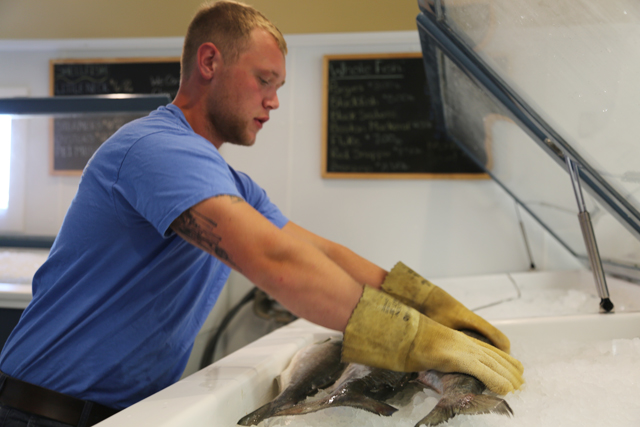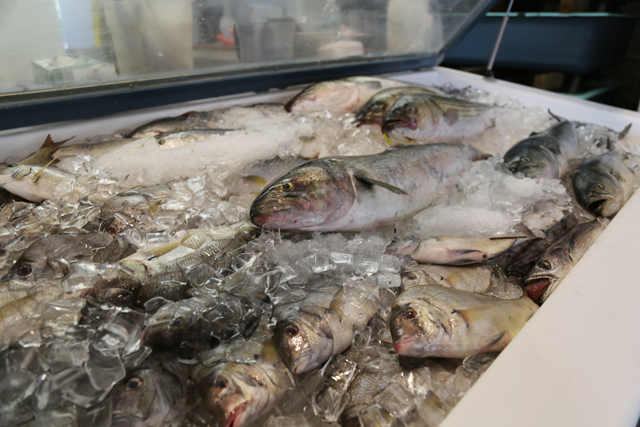Commercial bluefish season could come to early end


The commercial season for Atlantic bluefish in New York State could end prematurely following a pending decision from the National Oceanic and Atmospheric Administration.
The potential closure would come about three months earlier than usual and have a negative economic impact on commercial fisheries throughout New York, according to the state Department of Environmental Conservation.
The decision, which could be made any day now, is based on data from the Marine Recreation Information Program, which is the program NOAA uses to record all of its recreational fishing data. Recent data shows a high number of bluefish were caught last year by recreational fishers.
The DEC, however, has argued in a letter sent to NOAA that it finds the data “troubling” and is urging officials to reevaluate the findings.
On Monday, Senator Charles Schumer (D-NY) also called on NOAA to take a second look, writing in a letter to the organization that “any decision on bluefish fishing season must be based on up-to-date science, period.”
Mr. Schumer’s request follows a letter sent to NOAA last Tuesday by DEC commissioner Basil Seggos, who expressed concern that a mid-season closure would be a “devastating blow to our commercial fisheries.”
On the North Fork, several business owners have also expressed worry about how such a closure might impact them. Charlie Manwaring of Southold Fish Market said he sells a considerable number of bluefish this time of year.
“I’m not very happy because it’s one less fish I can sell,” Mr. Manwaring said, adding that bluefish season sometimes extends until November.
NOAA sets a quota each year for East Coast states regarding how many fish can be caught. The quota is divided between commercial and recreational fisheries. For Atlantic bluefish, about 80 percent of the quota relates to recreational fishing. Data from the Atlantic States Marine Fisheries Commission shows that recent yearly averages for recreational bluefish fishing are around 13 million pounds.
DEC officials said recreational fisheries almost never hit the 80 percent quota. When commercial fishermen want to harvest more fish, they said, the government can transfer a percentage of the remaining recreational quota.
Commercial fisheries in the state, however, have already hit their quota for the season — and there may not be any leftover quota to transfer.

This conclusion is based on NOAA’s finding that recreational fishermen hit their quota in 2015. If correct, the data would signify the first time in eight years such an event has occurred. The commercial bluefish season would end immediately.
Jim Gilmore, the DEC’s director of marine resources, said New York State reaches its commercial quota quickly each year. With the transferred quota from recreational fisheries, they’re able to harvest anywhere from 500,000 to one million pounds of bluefish annually. Without it, the state’s commercial fisheries are only able to harvest around 350,000 pounds.
“We essentially need that transfer to keep our fisheries going,” Mr. Gilmore said. He added that New York is one of the East Coast’s largest harvesters.
Commercial fisherman Kenny Clark, who is based in Greenport, expressed frustration in the quota system because he said he can only bring 1,000 pounds of bluefish each time he goes out even though he can catch between 5,000 and 10,000 pounds.
“Bluefish are one of the last types of fish that are here in abundance,” Mr. Clark said.
The regulations and quotas have forced commercial fishermen to give up because they can’t afford to stay in business he said. Where there used to be about 20 local fishermen, now that are only about five, he said.
“We’re regulated to death,” he said.
In Mr. Schumer’s letter to NOAA, he said it was essential to use all available data when making quota distribution decisions. The letter states the data from the 2015 recreational fishing season was based on a small sample size that is in stark contrast to New York State’s Vessel Trip Report data.
The senator added that a decision based on inaccurate and faulty data “could land a devastating blow to our already struggling fishermen, who deal with low quotas on many other fishery stocks.”
Bonnie Brady of the Long Island Commercial Fishing Association said that while ending the bluefish season this early would have some impact on related East End businesses, it’s a major blow to commercial fishermen.
“The precedent it is setting is the more troubling issue,” Ms. Brady said. She explained that state fisheries already face many restrictions with other species, like fluke and blackfish, and aren’t eager to see bluefish added to the list.
Mr. Manwaring agreed that fishing regulations have become frustrating to contend with. He said that while rules are important, he feels recreational fishing should be more regulated than commercial fishing.
“The fishing industry is huge for us,” Mr. Manwaring said. “People come to the East End of Long Island to eat fresh seafood.”
He added that if things continue in this direction, local seafood stores will need to order more imported fish — something he doesn’t favor.
“We have the fish right in our own backyard,” he said. “And we can’t even fish for them or use them because of a regulation.”
Top photo caption: Chris Geehreng stocking bluefish at Southold Fish Market Monday morning. (Credit: Krysten Massa)







